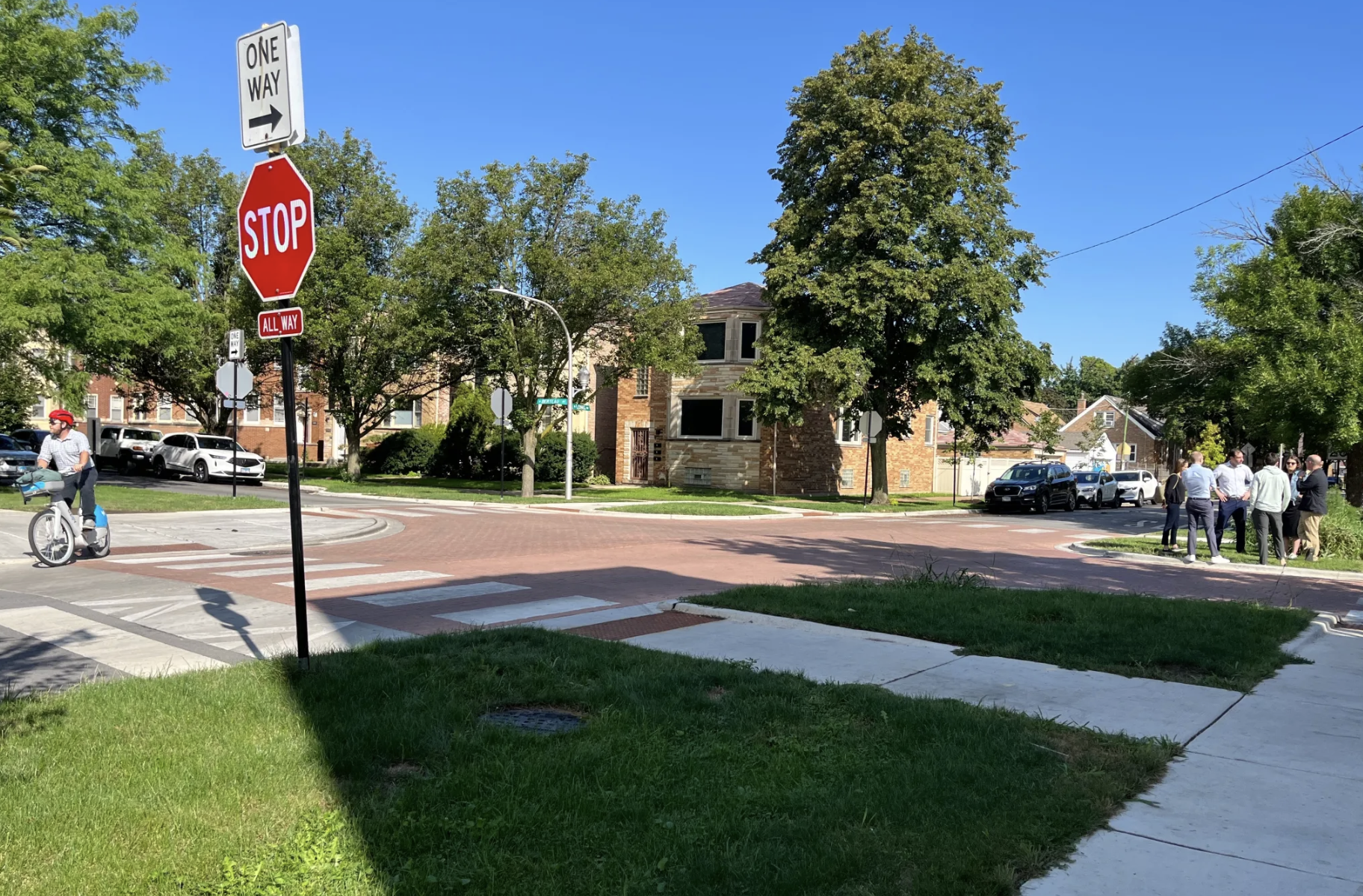There’s a story by Waukegan native and lifelong non-driver Ray Bradbury called "Yes, We'll Gather at the River," about a new superhighway that’s about to open, bypassing a small town. A couple of old-timers lament that all the local commerce will probably be sucked away from Main Street as new auto-centric development opens next to the expressway. In the end, the men decide that there’s no use trying to stop “progress,” so they move the construction barricades themselves, opening the floodgate for the river of cars.
That’s a bit what it felt like when I watched the Cortland Street Bascule Bridge being reopened to motorized traffic this morning. Ever since the Chicago Department of Transportation began rehabbing the historic span on June 1, it has been closed to cars.
However, during the entire project, at least one of the bridge’s sidewalks has remained open as an officially sanctioned route for pedestrian and bike riders. During this time, the stretch of Cortland between Elston Avenue and Clybourn Avenue has been virtually car-free. That made the street a safe, low-stress connection between the Armitage Avenue bike lanes and the Bloomingdale Trail.
Originally built in 1902, the bridge was the first “Chicago Style Fixed Trunnion Bascule Bridge,” a design that has since been copied by cities around the world, according to CDOT. The department says the overhaul was needed to repair sections of the roadway, as well as floor beams, trusses, and sidewalks.
Previously, anti-slip metal "Kathy Plates" (named for local bridge safety advocate Kathy Schubert) that formerly covered the biking portion of the otherwise open-grate bridge deck. These have been replaced with concrete, which eliminates the slightly wobbly sensation cyclists felt while riding over the plates. A very short stretch of striped bike lanes has also been added near the bridge.
Before the project started, the span typically saw about 10,000 motor vehicle trips per day. Lincoln Park residents blamed the closure for creating rush-hour gridlock on nearby streets, as well as funneling cars onto side streets, according to a June 11 DNAinfo report. For example, a local baseball mom claimed that detouring to east-west streets like Wrightwood Avenue added a whopping 20 minutes onto trips across the neighborhood to take her son to practice.
The Finkl Steel plant, located just east of the bridge was recently closed and demolished, which surely has removed some of the traffic from Clybourn. However, new residential and commercial development is likely coming to the Finkl, and a number of other large developments are currently in the works elsewhere in the neighborhood.
The gray car that crosses the bridge near the end of this video may have been the first "civilian" vehicle to use the span after the barricades were removed.
2nd Ward Alderman Brian Hopkins told DNA that the supposed carmaggedon caused by the bridge work might be a harbinger of things to come. "We are getting an interesting experiment of what would happen if you add 10,000 vehicles to the surrounding streets," Hopkins said. "It's frustrating drivers and causing lengthy delays."
Personally, I’m a little skeptical that the Cortland closure made rush-hour congestion as people have claimed. It’s possible that “traffic evaporation” was a factor. This is the commonly observed phenomenon that when roadways are narrowed or closed, there are fewer traffic problems than expected because people respond to the new scenario by driving less.
At any rate, it was a bit of a bummer this morning to see the barricades removed and the street reopened to motor vehicles again, destroying the tranquility of the commuting route for pedestrians and cyclists. Oh well, it was nice while it lasted.






